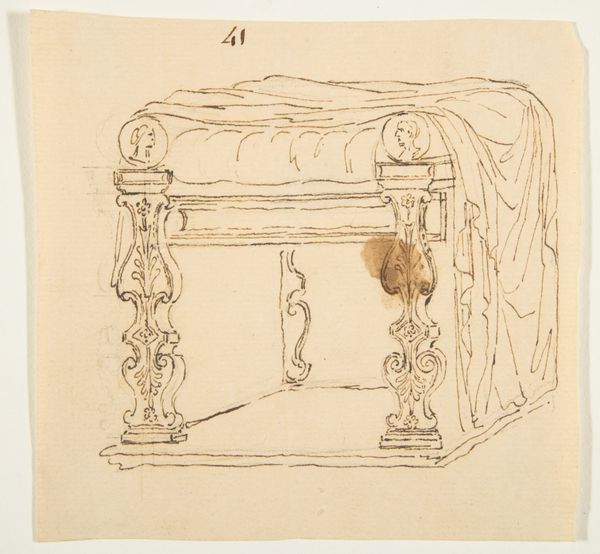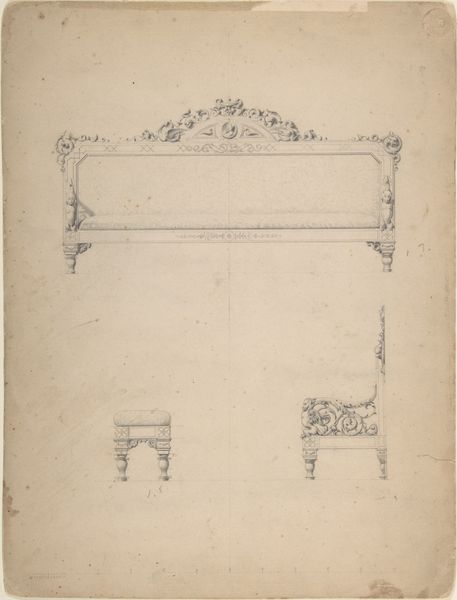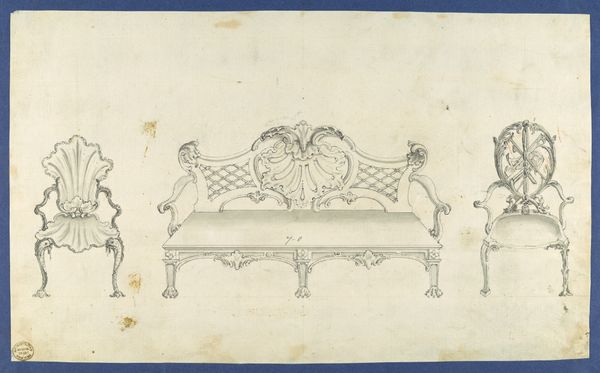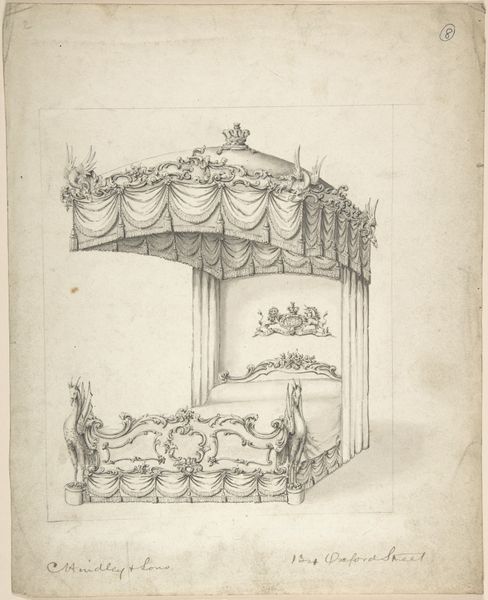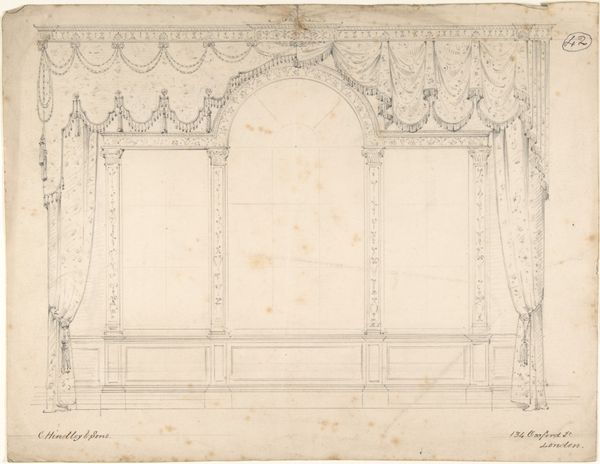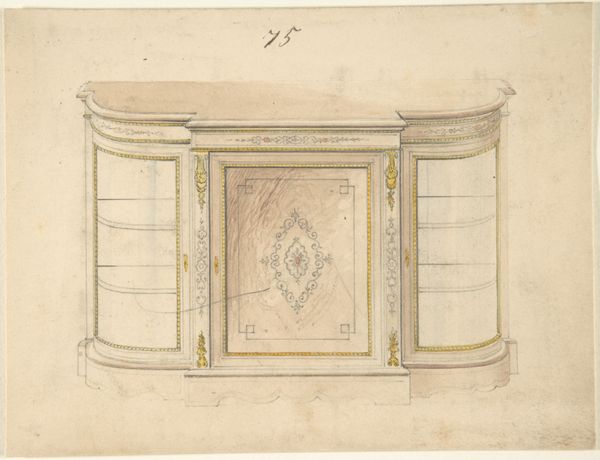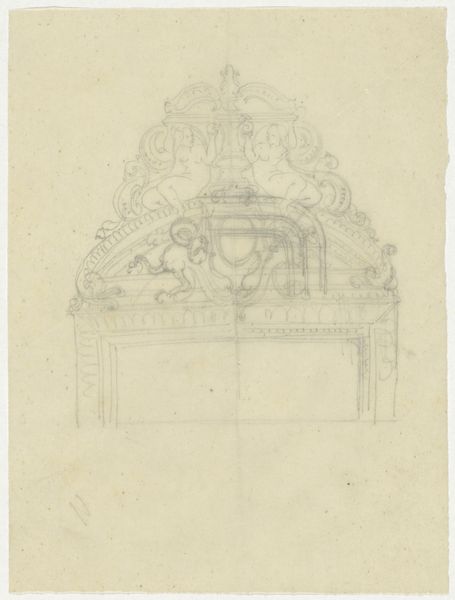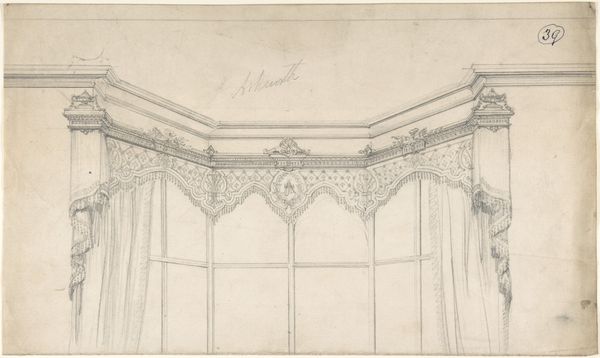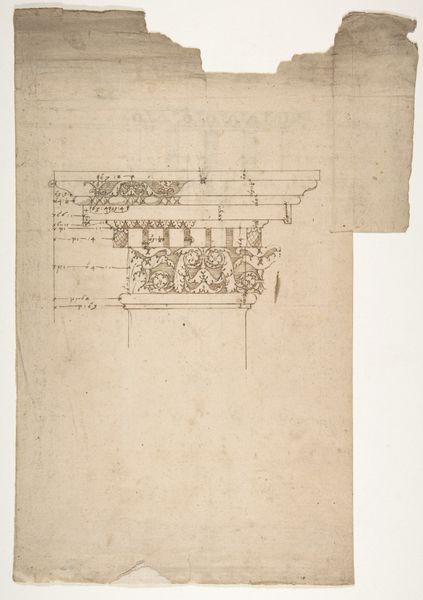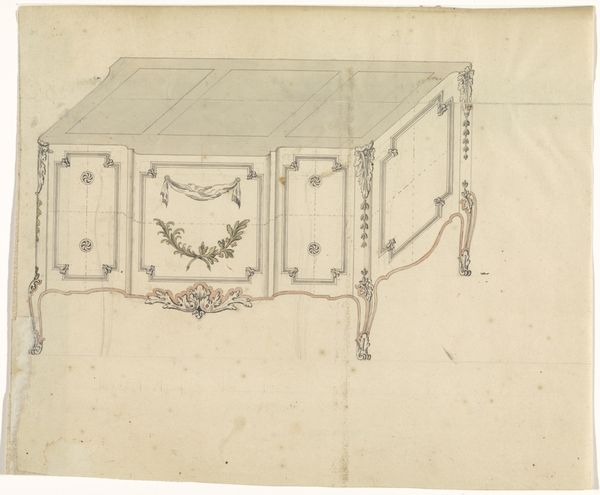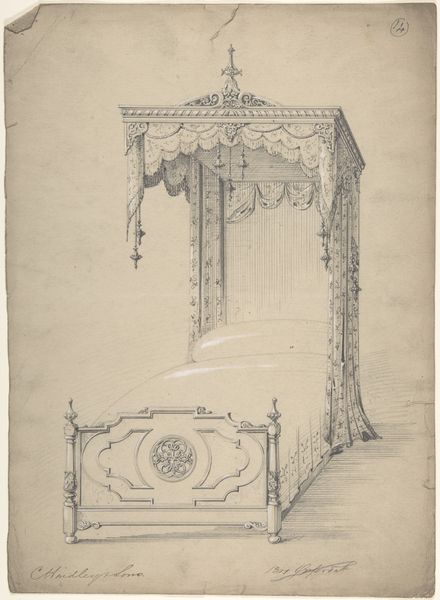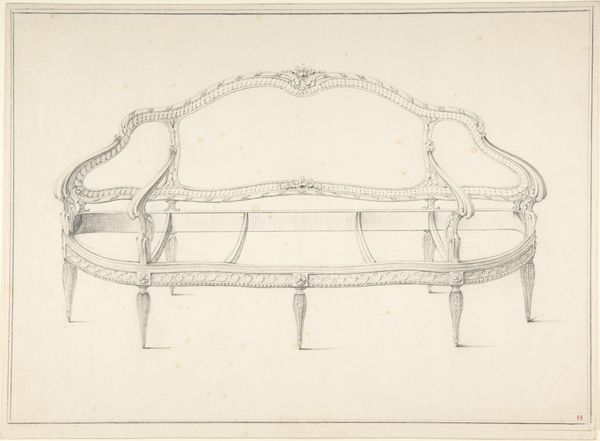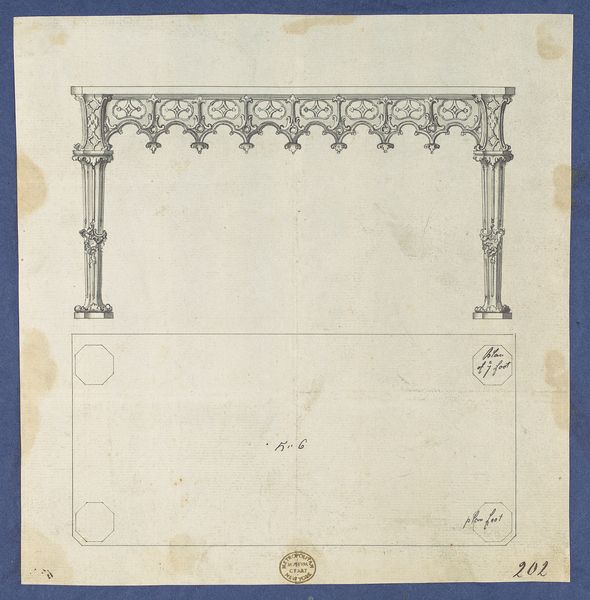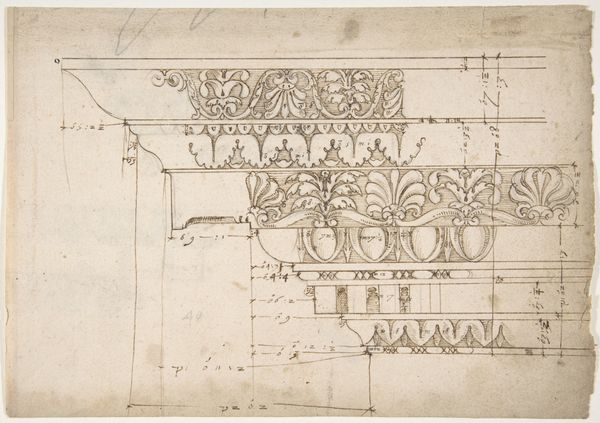
drawing, print, paper, ink, pencil, engraving
#
drawing
#
ink drawing
# print
#
etching
#
paper
#
ink
#
geometric
#
pencil
#
history-painting
#
engraving
Dimensions: sheet: 5 5/8 x 5 3/8 in. (14.3 x 13.7 cm)
Copyright: Public Domain
Curator: What an understated but powerful sketch. It's titled "Design for a Funerary Monument" and dates back to the 18th century. We don't know who the artist was. It's rendered in ink, pencil, and engraving on paper. It's currently held at The Metropolitan Museum of Art. Editor: Yes, that fragility conveyed in the simple lines—a lightness despite the somber subject matter—is immediately striking. What does it tell us? Curator: Well, if we consider its composition, we see a clear emphasis on geometric forms—the rectangular monument itself, softened by the looping garlands and grotesque masks adorning its surface. The inscription tablet provides a focal point, framed by these contrasting decorative elements. The tension between geometric stability and ornate embellishment could reflect the dual nature of mourning: the rational acceptance of death versus the emotional outpouring of grief. Editor: Interesting. From a material perspective, the layering of pencil, ink, and engraving suggests a careful process of revision and refinement, revealing a thoughtful consideration of how the monument would be constructed and perceived. The engraver was very interested in exploring process, experimenting with tools. I'm curious what the workshop dynamics would have looked like in its production. Curator: Indeed, and the choice of paper as a support contributes to the artwork's delicate quality, as though acknowledging the transient nature of life and memory. Furthermore, we could argue that the print as medium facilitated the wide dissemination of ideas about mourning and commemoration. Editor: And that print would act as a tool for sculptors or stone masons—who actually did the physical and demanding labor to erect this monument. Considering the cost of materials and skilled craftsmanship required, these monuments were undoubtedly commissioned by the wealthy elite to legitimize power. Curator: Precisely! So, while formally we can appreciate this as an exquisite example of 18th-century drawing, steeped in classical allusion and subtle emotive strategies... Editor: We cannot discount the implications regarding production, value, class, and what social practices influenced this object, right? In conclusion, it embodies loss, but simultaneously reinforces social stratification. Curator: Yes, quite right. Both converge to inform our experience.
Comments
No comments
Be the first to comment and join the conversation on the ultimate creative platform.
